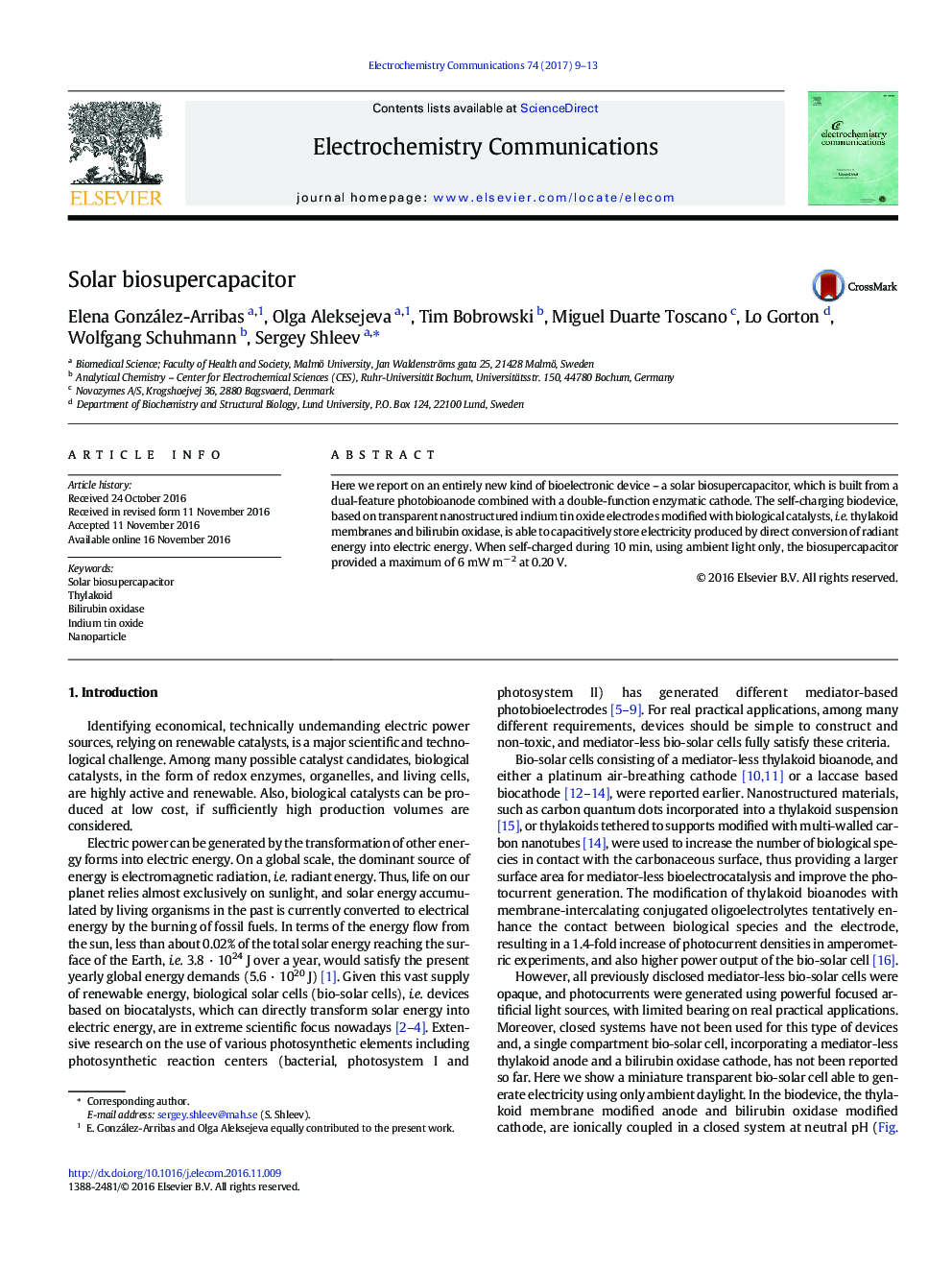| Article ID | Journal | Published Year | Pages | File Type |
|---|---|---|---|---|
| 4766588 | Electrochemistry Communications | 2017 | 5 Pages |
â¢The very first solar biosupercapacitor was fabricated and tested.â¢The self-charging biodevice was transparent and mediator-less.â¢ITO nanostructured electrodes, bilirubin oxidase, and thylakoids were used.â¢Electricity is produced by direct conversion of solar energy into electric energy.â¢The biosupercapacitor is able to generate and simultaneously store electricity capacitively.
Here we report on an entirely new kind of bioelectronic device - a solar biosupercapacitor, which is built from a dual-feature photobioanode combined with a double-function enzymatic cathode. The self-charging biodevice, based on transparent nanostructured indium tin oxide electrodes modified with biological catalysts, i.e. thylakoid membranes and bilirubin oxidase, is able to capacitively store electricity produced by direct conversion of radiant energy into electric energy. When self-charged during 10 min, using ambient light only, the biosupercapacitor provided a maximum of 6 mW mâ 2 at 0.20 V.
Graphical abstractDownload high-res image (125KB)Download full-size image
